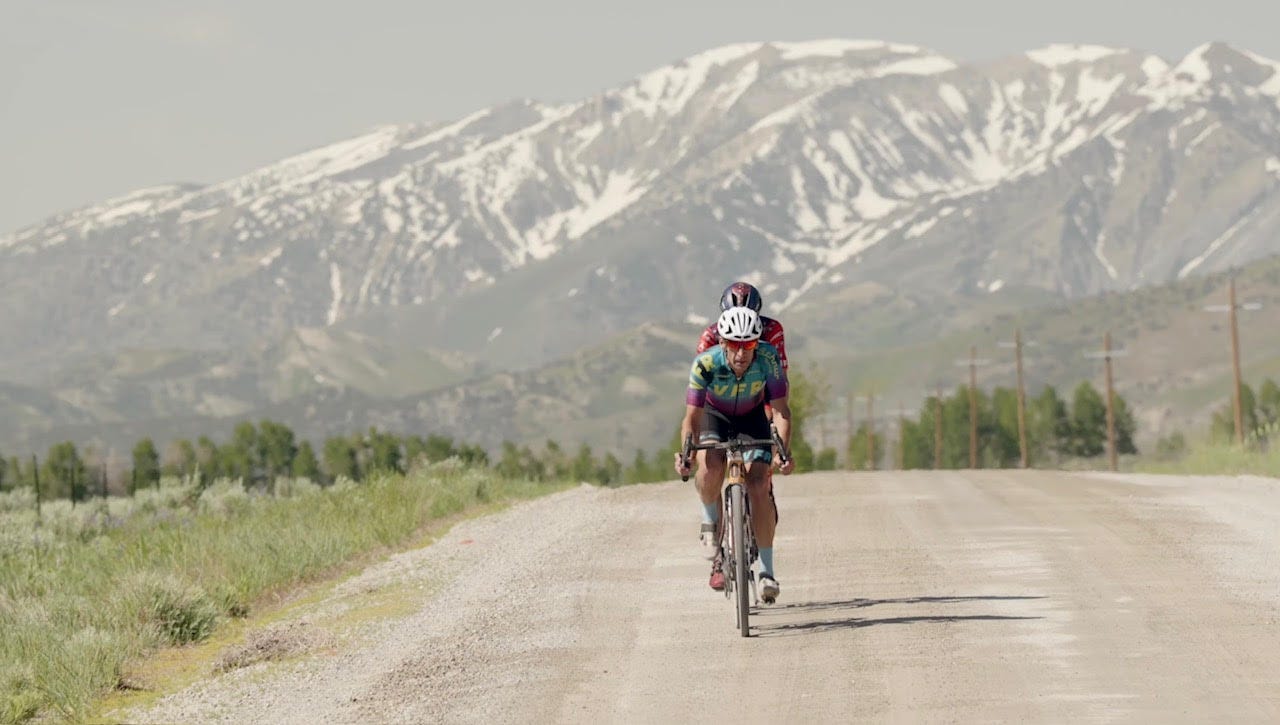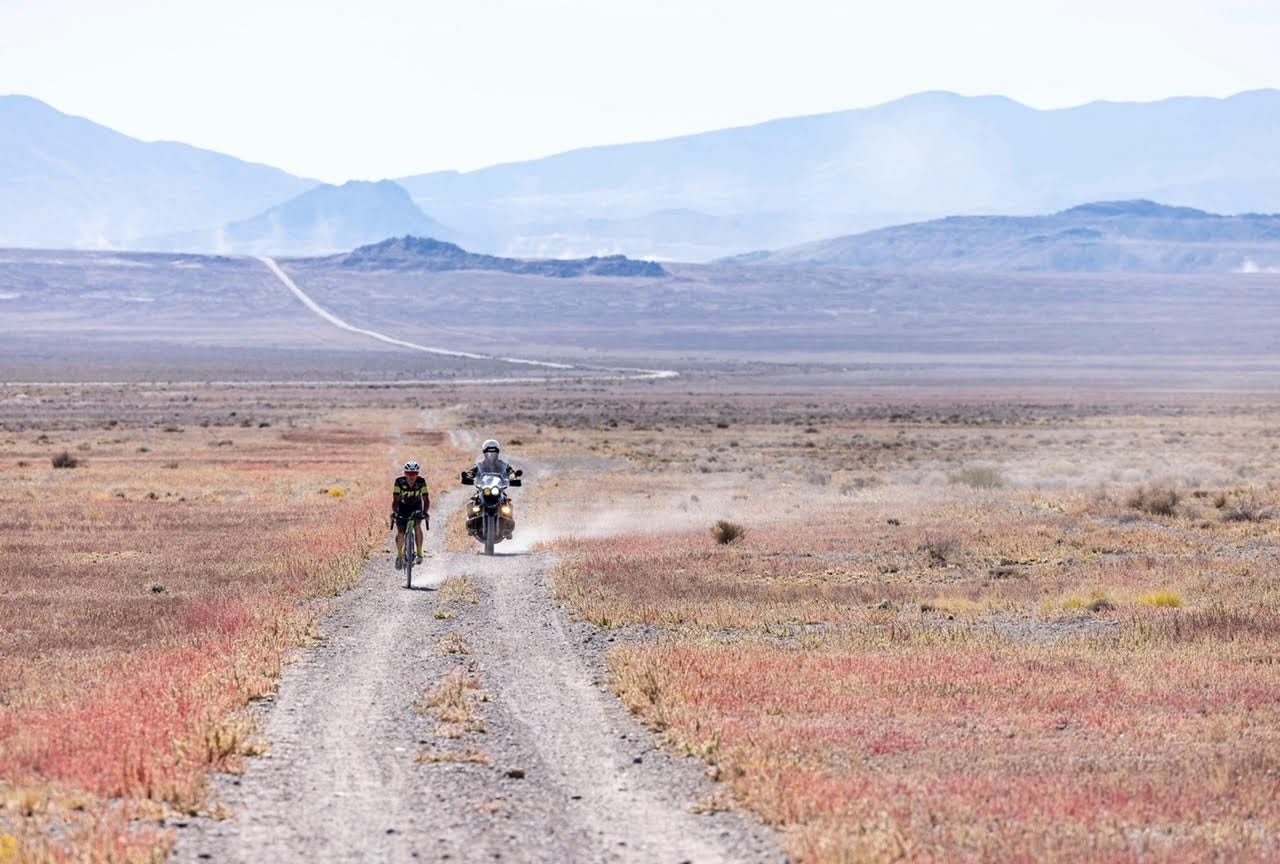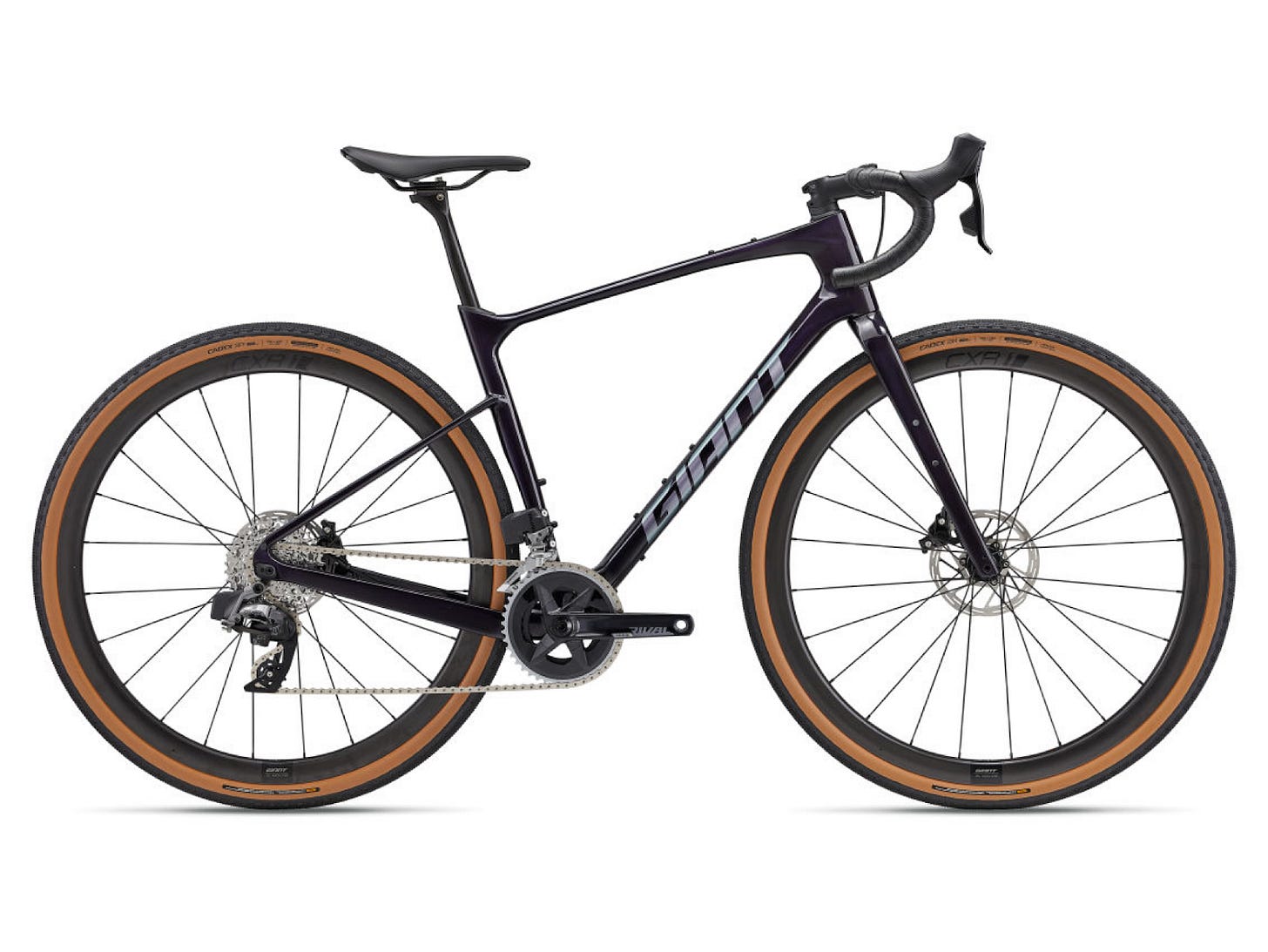Listen
The Why
“I’ve always had imposter syndrome. So, whenever I get into big moments, I have some negative self-talk. But what cycling really taught me is that I can do this. I am doing it. You must have positive self-talk. When you’re suffering on a climb, you have to tell yourself, ‘Five more minutes.’ You have to tell yourself that again and again and again.
There are over 4 million miles of roads in the United States. Over half are gravel.
This is excellent news for the burgeoning sport of gravel bike racing. Riding on dirt isn't new. People have been doing it since the invention of the wheel.
But today, it's the fastest-growing segment of cycling. People are waking up to the fact that they can explore hundreds of miles of beautiful country in a weekend.
You have rural farm roads weaving throughout the Midwest. Logging routes coursing through the Rockies. Deserted oil roads spanning sprawling throughout Southwest. And abandoned railroad tracks covering the East Coast.
"In the last four years, the interest in gravel racing and cycling has surpassed road cycling," says David Christenson. "I think a big part of it is getting away from traffic and the busyness of riding on roads. And then there's the challenge of it all. You need some skill on dirt so you don't crash on a corner or know how to get traction on a climb."
No matter where you ride, there's something to see or experience. And there are multiple ways to approach the sport.
If you're looking for a weekend ride, GravelMap offers hundreds of established routes. If you want something more adventurous, gravel riding is introducing people to bikepacking.
If you need to scratch your competitive itch, dozens of gravel races are popping up in every state.
Then, there are events known as Gravel Fondos. These are an American take on an Italian classic. The Fondo is an Italian word meaning "Big Ride." These are mass-participation cycling events, with some bringing in over 10,000 riders.
Italy organized the first Gran Fondo in 1970. Since then, they've expanded across Europe and are making their way to the United States.
The Gran Fondo came to the U.S. in 2009. At the time, only a handful of events occurred; now, there are over 200.
The Italian Cycling Federation defines Gran Fondo as any event over 75 miles, chipped timed from start to finish, and offers prizes to the fastest riders in each category. In other words, Fondos are for everyone.
And this welcoming nature is precisely why Fondos are so popular. You can make it a race or a ride. Either way, you're guaranteed to have a good time.
A good gravel race meets three requirements. There should be spectacular scenery, some technical terrain, and plenty of good dirt. The Ruby Roubaix checks all these boxes.
This gravel Fondo starts and ends in the picturesque town of Lamoille, Nevada. Once a mining town, Lamoille is now the gateway to the Ruby Mountains.
Often compared to the Swiss Alps, The Ruby Mountains are an excellent backdrop for world-class gravel racing.
The Ruby Roubaix offers four distances: a 22-mile, 38-mile, 62-mile, and 117-mile loop. The longer the loop, the more remote the route becomes. At the farthest point, the closest rescue is an hour’s helicopter ride away.
Venturing into the wild is part of the draw of gravel riding, though. It’s rugged. Rough. Unrefined. When done, riders are caked in earth, a sign of a job well done, and I need a beer.
"There's nothing quite like seeing places you've never been from a bike. You're suffering, but you have time to take it in. Whether running, cycling, or doing a Spartan race, suffering through that stuff and physically pushing yourself makes you appreciate it a lot more. When it's all said and done, you cherish that stuff in the end," says David.
The Training
Gravel riding is the epitome of adventure. You can cover vast distances and see things you otherwise wouldn’t on foot or behind the wheel of a car. But that also comes with a responsibility. You must prepare, and not just from a physical standpoint.
Physical training
“Consistency is the most important thing with training. If you’ve got 4 hours to ride a week, it’s best to split those up throughout the week than to do two 2-hour rides on the weekend. That way, you’re getting training stress on multiple days rather than two,” explains David.
Food training
“I know what I’m going to eat on the race day. I know they won’t upset my stomach because I’ve worked through it beforehand,” says David.
Gear training
“Knowing your equipment is huge in these dirt events. Do you know what gear ratios you’re running? You want bigger gears for Ruby Roubaix because it’s not a ton of climbing. There are a lot of flat, fast sections,” explains David.
Enjoy it
The physical side is significant. Food training is essential. “And the gear (piece) is critical. But the overall thing is you’ve got to enjoy it. You’ve got to enjoy this if you’re going to ride your bike for a hundred and something miles.
The Food
Whether you're racing or riding, fatigue will set in. So, it's paramount that you dial in your nutrition along with a physical and gear strategy.
David's nutrition strategy
"I do anywhere from 60 to 100 grams of carbs per hour," says David. "I used to eat solid foods, but now I'm 100% gels and drink mixes.
Nutrition starts before the race
You can't ignore your nutrition before the race and expect to perform on race day. Fueling beforehand ensures your glycogen levels are full. So, come race time, you'll have enough energy to take you across the finish line.
Opt for carb-rich foods you know you'll enjoy, but don't gorge yourself the night before. Your body can only store so much glycogen. Fueling correctly throughout the week will ensure you don't overload.
The Gear
David’s gear kit
Lessons Learned
David, on the power of your words
“I’ve always had imposter syndrome. So, whenever I get into big moments, I have some negative self-talk. But what cycling really taught me is that I can do this. I am doing it. You must have positive self-talk. When you’re suffering on a climb, you have to tell yourself, ‘Five more minutes.’ You have to tell yourself that again and again and again.”
My $0.02
When I climbed Mt. Rainier, I don’t remember when we reached the summit.
But I do remember how scared I was climbing at night and the sound of my heart beating through my eyeballs.
I don’t remember all the sunsets I experienced during a solo backpacking trip in Scotland.
But I do remember how lonely I felt the first night and how hard I cried when it was all said and done.
It’s interesting how we forget the things we think we’d remember and remember the things we hoped we’d forget.
That’s because the summit is nothing without the mountain. One cannot exist without the other.
So, the next time you’re suffering through a physical challenge, smile.
That’s a moment you’ll never forget.








We talk about this often when we go hiking with our young son who is now 12… enjoy the journey, if you wait for the summit to be happy, then you will miss the entire hike
Ohhh that's good. Well said, Tripp.